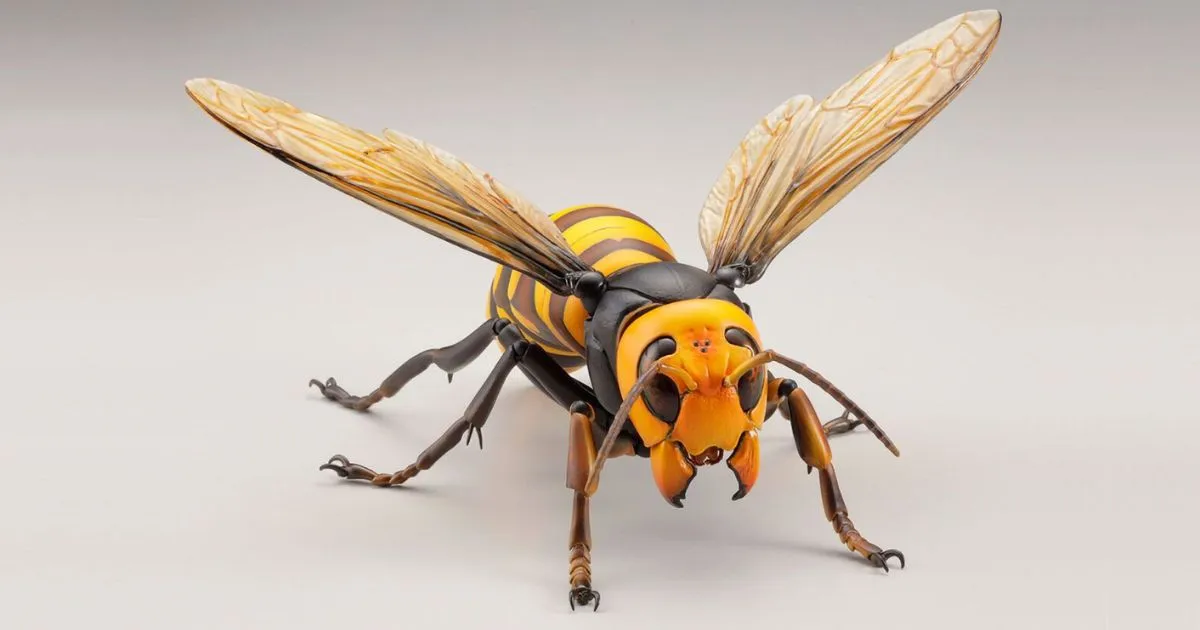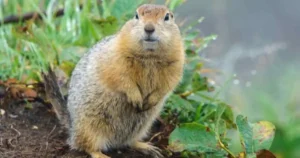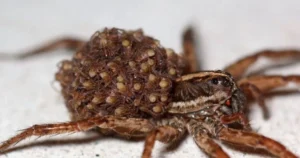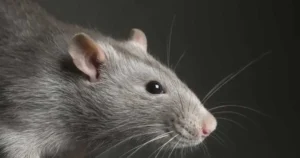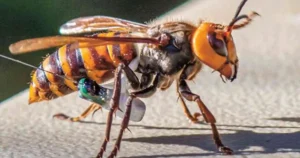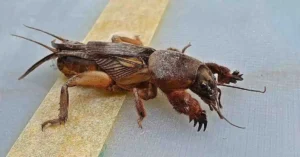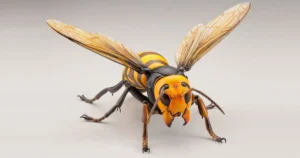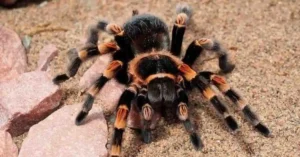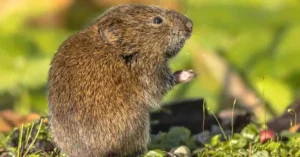The Asian Giant Hornet (Vespa mandarinia), often referred to as the “murder hornet,” has become a significant threat due to its large size, aggressive nature, and the damage it can cause to local ecosystems, agriculture, and even human health.
Native to East Asia, these hornets have recently spread to other parts of the world, including North America. This article provides an in-depth look at their identification, risks, and control measures, aiming to equip readers with the knowledge necessary to understand and manage these pests.
What Are Asian Giant Hornets?
Asian Giant Hornets are the largest hornet species in the world, growing to 1.5 to 2 inches in length, with queens being even larger. These creatures are characterized by their large orange-yellow heads, prominent black thorax, and a striped black-and-orange abdomen. With a wingspan of up to 3 inches, they are a sight to behold. The female hornets are the only ones that possess a stinger, which can deliver venomous stings.
Identification Features:
- Size: 1.5-2 inches, with queens growing larger.
- Color: Orange-yellow head, black thorax, striped abdomen.
- Stinger: Found on females, around 1/4 inch long.
- Wingspan: Up to 3 inches.
Where Do Asian Giant Hornets Live?
Asian Giant Hornets are native to East Asia, including Japan, Korea, and China. They prefer temperate climates and are commonly found in forests and rural areas where they build nests in the ground or in hollow tree trunks. However, since their discovery in North America in 2019, they have adapted to survive in new environments, including urban areas.
Spread and Adaptability
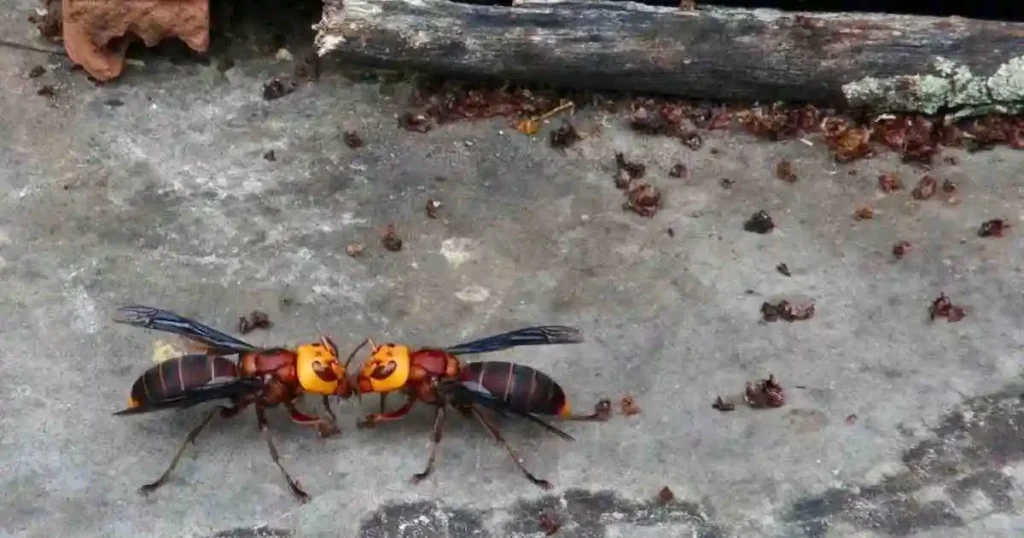
Scientists suspect that the introduction of Asian Giant Hornets to North America occurred via international cargo shipments. Their ability to survive in colder climates suggests they may pose a long-term threat in temperate regions across the U.S. and Canada.
Why Are Asian Giant Hornets Dangerous?
Asian Giant Hornets are a significant threat to both agriculture and public health for several reasons:
- Destruction of Honeybee Colonies: The most dangerous impact of these hornets is their predation on honeybee colonies. They attack hives, killing adult bees and stealing larvae and pupae to feed their young. Honeybees are essential for pollination, making this a serious ecological threat.
- Venomous Stings: The sting of an Asian Giant Hornet is not only painful but can also cause severe allergic reactions. Multiple stings can be fatal, and in Japan, these hornets are responsible for 30 to 50 deaths per year.
- Economic Impact: The loss of honeybees due to these hornets can have devastating effects on agriculture, as bees play a crucial role in pollinating crops like fruits and vegetables.
Venomous Stings
The venom from a sting is comparable to that of a common bee or wasp, but the hornet can sting multiple times, injecting a larger amount of venom. Symptoms can include intense pain, swelling, and in severe cases, anaphylaxis.
Lifecycle and Behavior of the Asian Giant Hornet
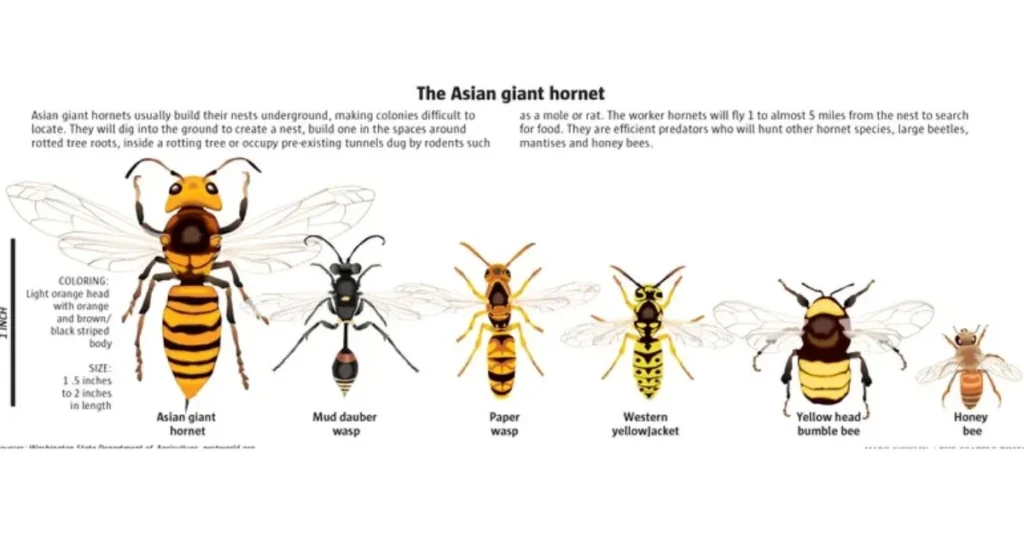
Understanding the lifecycle and behavior of Asian Giant Hornets is key to managing their presence. These hornets operate on an annual cycle that begins in the spring with the emergence of the queen hornet from hibernation.
Lifecycle Stages:
- Queen Emergence: In early spring, the queen leaves her overwintering site to start a new colony.
- Nest Building: The queen lays eggs, which hatch into workers. These workers expand the nest and forage for food.
- Late Summer: As the season progresses, the colony produces new queens and male hornets, which mate. These new queens hibernate until the next spring.
Worker Behavior:
Asian Giant Hornets hunt in groups during late summer to gather food for their colony, specifically targeting honeybee hives. The hornets decapitate the bees and feed their larvae to ensure the survival of the colony.
Signs of an Asian Giant Hornet Infestation
Recognizing an infestation early can help minimize the risks. Here are some common signs to watch out for:
- Hornet Sightings: Large hornets, especially during the late summer and fall, foraging near beehives or nests.
- Honeybee Losses: If you notice a sudden decline in your honeybee population or find piles of dead bees near the hive, it may be due to hornet attacks.
- Nests: Look for large, papery nests in trees or underground. These nests can be up to the size of a basketball.
How to Control and Prevent Asian Giant Hornets
Control measures are essential for minimizing the threat of Asian Giant Hornets. Here’s what you can do:
Prevention Tips:
- Avoid Attracting Hornets: Keep outdoor food sources covered and clean to avoid attracting hornets.
- Seal Potential Nest Sites: Check your property for potential nesting sites, such as hollow trees or areas with soft ground.
- Use Hornet Traps: Special traps designed to catch hornets can help reduce their numbers in the area.
Control Methods:
- Insecticides: Insecticides designed to kill hornets on contact can be effective. Use them in the early morning or late evening when the hornets are less active.
- Professional Help: If you discover a large nest or if the infestation becomes too severe, it is best to contact professional pest control services for safe nest removal.
Key Control Methods for Asian Giant Hornets
| Control Method | Description | Pros | Cons |
| Insecticides | Sprays or powders designed to kill hornets on contact. | Immediate results, easy to use. | Potentially harmful to other insects. |
| Traps | Special traps designed to attract and capture hornets. | Non-toxic, easy to set up. | May not capture large numbers. |
| Professional Removal | Hiring experts to safely remove nests. | Safe, effective for large nests. | Can be expensive. |
Conclusion
Asian Giant Hornets present a real threat to ecosystems, agriculture, and public health, particularly due to their destruction of honeybee populations and their venomous stings. Understanding their lifecycle, behavior, and risks is critical for managing their impact. With appropriate control methods and preventative measures, we can reduce their spread and protect both our environment and health.
FAQs
What is the best way to avoid Asian Giant Hornet stings?
The best way to avoid being stung is to stay clear of their nests. If you see a hornet, move slowly and avoid disturbing it. If you’re allergic to stings, carry an epinephrine injector.
Can Asian Giant Hornets be eradicated?
Complete eradication of Asian Giant Hornets may be difficult due to their ability to adapt to new environments. However, local control measures can reduce their numbers.
How do Asian Giant Hornets affect agriculture?
Asian Giant Hornets target honeybee colonies, which are essential for pollinating crops. The destruction of these colonies can lead to reduced pollination and crop yields.
Is it safe to remove an Asian Giant Hornet nest myself?
It is not recommended to attempt nest removal yourself, as hornets can become highly aggressive. Contact professional pest control services to safely handle the removal.

James William is a passionate animal lover and expert in the Animals and Pets niche. With years of experience in pet care, wildlife studies, and blogging, James shares practical tips, heartwarming stories, and expert advice to help pet owners build stronger bonds with their furry, feathered, and scaly companions.
